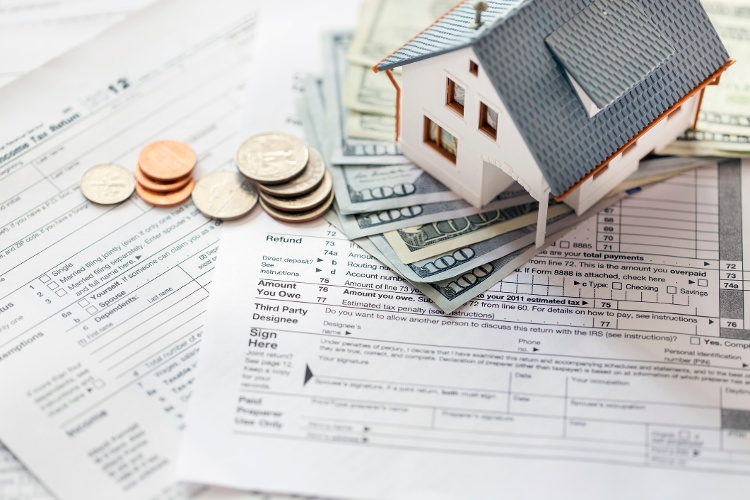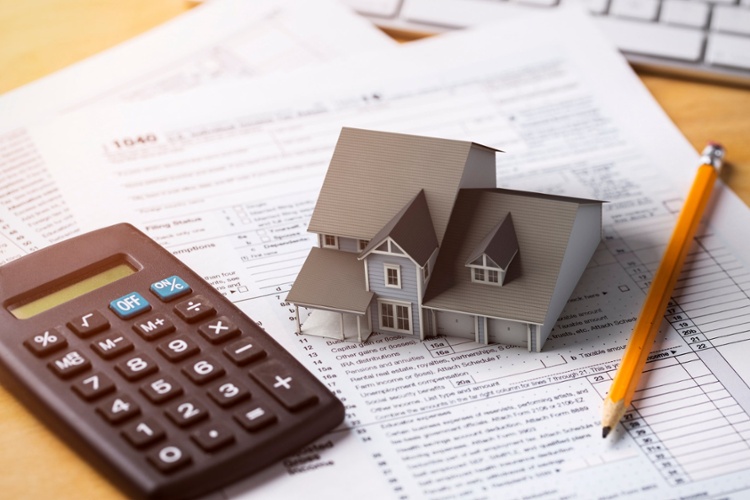Capital gains tax and depreciation recapture tax can take a big bite out of your profits when you sell rental property. But believe it or not, the tax code in the U.S. offers real estate investors a completely legal way to defer paying tax on the capital gain from an investment property.
In this article we’ll take an in-depth look at 1031 exchange rules and explain how you may be able to keep all of your sales profits instead of having to pay a large portion of it in taxes to the IRS.
What is a 1031 exchange?
A 1031 exchange is used by real estate investors to defer paying capital gains tax and depreciation recapture tax on the sale of investment property. Depending on the market you invest in, a 1031 exchange may also be known as a Section 1031 exchange, tax deferred exchange, like-kind exchange, Starker exchange, or simply a 1031.
Regardless of the name, the benefits of a 1031 are all the same. By putting off paying tax to a later day, rental property investors have more capital to invest in income-producing real estate instead of paying the federal and state governments.

Benefits of a 1031 tax deferred exchange
Although conducting a 1031 exchange to defer paying capital gains tax is one of the biggest benefits of a tax deferred exchange, there are several other reasons for using this transaction type to relinquish one property and acquire others:
- Reallocate capital from under-performing commercial real estate into residential rental housing that generates more consistent returns throughout the entire economic cycle.
- Diversify property holdings across various geographic areas where population and job growth is strong.
- Relinquish a single large property such as a shopping center and purchase an existing portfolio of rental homes to generate a higher overall yield.
- Minimize increase of taxable net income caused by depreciation recapture when an income property is relinquished and not replaced with another one.
1031 exchange rules in plain English
There are several rules real estate investors must follow to defer paying capital gains tax when conducting like-kind exchanges under Internal Revenue Code (IRC) Section 1031:
Investment property
The relinquished (sold) and the replacement property (purchased) must be like-kind property used for business or investment purposes. Most real estate is like-kind to other real estate. For example, you can relinquish an office building and replace it with a portfolio of single-family rental homes, or sell land and purchase a multifamily property.
On the other hand, a primary residence is not like kind because the house is not used primarily as an investment, and property within the U.S. is not like-kind to property outside of the U.S.
Same taxpayer
Individuals and entities that own investment real estate qualify for a 1031 tax deferred exchange. That means a natural person, S corporation, C corporation, partnership, trust, limited liability company (LLC), and any other entity that pays taxes may conduct a Section 1031 exchange.
However, the same taxpayer name must be used when relinquishing and replacing properties in a 1031. That’s because the IRS treats a 1031 exchange as a continuation of ownership even though the individual property is different.
Equal or greater value
The 1031 exchange must not generate a gain to the investor, which means the replacement property must be of equal or greater value to the property relinquished. Replacement property must also have the same or greater mortgage balance of the relinquished property. For example, if the relinquished property has a mortgage balance of $100,000 the replacement property must also be financed with a loan of at least $100,000.
Time limits
There are two time limits to remember when conducting a 1031 tax deferred exchange:
- 45 days: Replacement property must be identified (by having a written offer accepted) within 45 days of the sale of the relinquished property closing escrow.
- 180 days: Escrow on the replacement property must close within 180 days of the sale of the relinquished property closing escrow.
No boot
Boot occurs when the value of the replacement property is less than the value of the relinquished property. Because not all of the gain from the sale of the relinquished property was used to purchase the replacement property, the difference is taxed as a capital gain during the year the exchange took place.
No touching of money
A Qualified Intermediary (QI) is hired by the investor to accept the sales proceeds from the relinquished property, and to transfer the funds to the seller of the replacement property when escrow closes. Investors who take possession of the sales proceeds will have the entire amount treated as boot by the IRS and will be subject to capital gains tax on the entire amount.
Rules for identifying replacement properties
Real estate investors have three general options for identifying one or more replacement properties during the 45-day identification window:
- Three Property Rule: Up to three properties may be identified regardless of their value, and the investor must only purchase one of the three.
- 95% Rule: Unlimited number of properties may be identified, but the investor must purchase 95% of the aggregate value of the properties identified.
- 200% Rule: Unlimited number of properties may be identified, provided that the aggregate value of the identified properties does not exceed 200% of the value of the relinquished property.
Example of a 1031 exchange
Now let’s look at how a delayed 1031 exchange works, where the relinquished property is sold before the replacement property is purchased, using the following assumptions:
- Purchase price = $200,000
- Depreciation = $25,000
- Sale price = $400,000
- Investor tax bracket = 35%
Step #1: Calculate adjusted basis
To calculate the adjusted basis of the property, deduct the depreciation expense taken from the purchase price. In this example, the adjusted basis is $175,000. Note that items such as closing costs/fees and capital improvements (such as replacing a central heating and cooling system) are not included in this example but would ordinarily be added to the purchase price of the property to increase the property basis.
Step #2: Determine realized gain
By subtracting the adjusted basis of $175,000 from the sales price of $400,000 we determine the realized gain is $225,000. In this example, we are assuming that there is no mortgage on the property, so the net cash received is $400,000.
Step #3: Estimate potential tax liability
- Federal tax on depreciation recapture = $25,000 depreciation x 25% = $6,250
- Federal tax on capital gain = $225,000 - $25,000 depreciation recapture = $200,000 x 20% (capital gains tax rate for someone in this tax bracket) = $40,000
- Net Investment Income Tax = $225,000 x 3.8% = $8,550 (note: this tax only applies to certain investors - go here to learn more)
- Total estimated tax liability = $54,800
Although the taxpayer is in the 35% tax bracket, the depreciation recapture tax is capped at 25%.
Some states may also assess a tax on capital gains that must be added into the estimated potential tax liability when you sell a rental property. For example, California, Hawaii, and New Jersey state capital gains tax rates of 13.30%, 11.00%, and 10.75% respectively.
Step #4: Conduct a 1031 tax deferred exchange
- Without a 1031 tax deferred exchange: $400,000 net cash received - $54,800 tax liability = $345,200 available to reinvest
- With a 1031 tax deferred exchange: $400,000 net cash received - $0 tax liability = $400,000 available to reinvest
One thing worth mentioning here. When a real estate investor passes away and their properties are passed on to an heir, the property is revalued—or stepped up to—its fair market value and any deferred capital gains taxes are eliminated. This is something worth keeping in mind as you think of your estate planning.
Types of 1031 exchanges
There are three main types of 1031 exchanges that most real estate investors use:
Delayed 1031 exchange
A delayed 1031 exchange is the most common type of tax deferred exchange. Here’s how the timeline looks for this type of 1031 exchange:
- Sell relinquished property with sales proceeds given directly to a Qualified Intermediary (QI).
- Identify one or more replacement properties within 45 days of the sale of the relinquished property.
- Close escrow on the purchase of the replacement property within 180 days of the relinquished property sale, with the QI transferring sales proceeds to the seller of the replacement property.
Reverse 1031 exchange
In a reverse 1031 exchange, an investor purchases the replacement property before selling the relinquished property, following the same timelines and guidelines for a delayed 1031 exchange.
A reverse 1031 allows an investor to seize an opportunity that presents itself before another buyer does, and can also provide more control over the deal terms when the relinquished property is sold.
Build-to-Suit 1031 exchange
A build-to-suit 1031 exchange is used by investors who are building a property or significantly rehabbing an existing property. The build-to-suit 1031 is similar to a delayed exchange, and follows the same timelines and guidelines.
However, if construction and renovation on the replacement property is not completed within 180 days of the relinquished property closing escrow, the uncompleted portion of the project would be treated as taxable unused exchange proceeds by the IRS for tax purposes and will not qualify as part of the reverse exchange.









